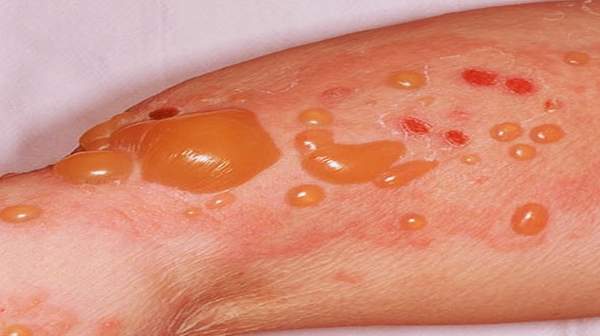Bullous pemphigoid is a blistering skin disease that tends to affect the elderly.
It’s caused by a problem with the immune system, but usually goes away on its own within a few years. In the meantime, blisters can be controlled with medication.
The rash and blisters are usually seen on the upper arms and thighs, sometimes spreading to body folds and the tummy. In severe cases, the blisters may cover most of the skin, including the inside of the mouth.
However, some people have no symptoms or just have mild redness and irritation without blisters.
The condition is usually seen in older people aged over 70. Rarely, it can affect children and younger adults.
Bullous pemphigoid is also slightly more common in women than men.
Bullous pemphigoid is an autoimmune condition, which means the immune system attacks the body’s own tissues and organs.
The person’s immune system produces antibodies against the skin. These antibodies attack the basement membrane, which lies between the skin’s top layer (epidermis) and the next layer (dermis), and holds the skin together. The skin layers start to separate and fluid builds up in between.


